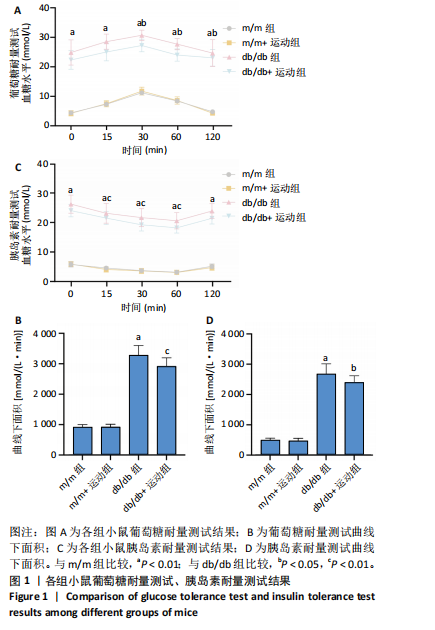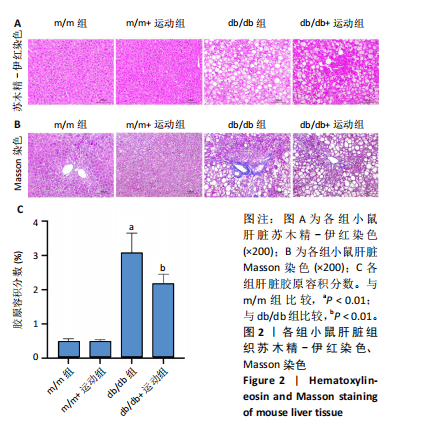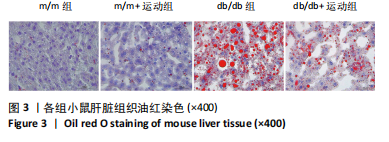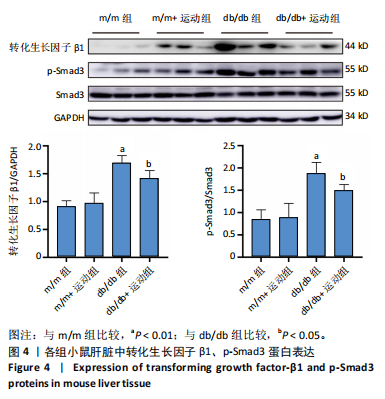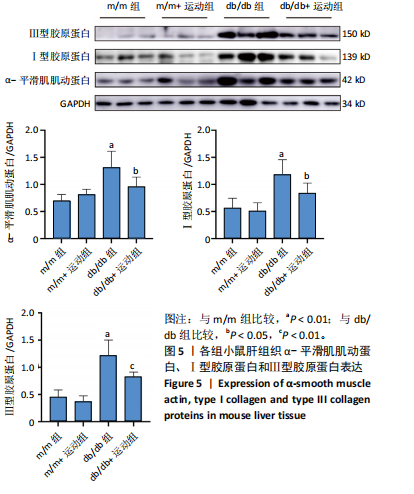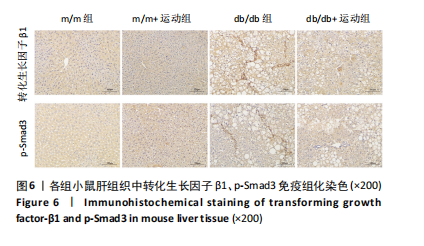[1] SUN H, SAEEDI P, KARURANGA S, et al. IDF Diabetes Atlas: Global, regional and country-level diabetes prevalence estimates for 2021 and projections for 2045. Diabetes Res Clin Pract. 2022;183:109119.
[2] JIANG Y, SUI D, LI M, et al. Ginsenoside Re Improves Inflammation and Fibrosis in Hepatic Tissue by Upregulating PPARγ Expression and Inhibiting Oxidative Stress in db/db Mice. Evid Based Complement Alternat Med. 2021;2021:9003603.
[3] FALCK-YTTER Y, YOUNOSSI ZM, MARCHESINI G, et al. Clinical features and natural history of nonalcoholic steatosis syndromes. Semin Liver Dis. 2001;21(1):17-26.
[4] LEE CH, LUI DT, LAM KS. Non-alcoholic fatty liver disease and type 2 diabetes: An update. J Diabetes Investig. 2022;13(6):930-940.
[5] GHARBIA S, NAZARIE SR, DINESCU S, et al. Adipose-Derived Stem Cells (ADSCs) Supplemented with Hepatocyte Growth Factor (HGF) Attenuate Hepatic Stellate Cell Activation and Liver Fibrosis by Inhibiting the TGF-β/Smad Signaling Pathway in Chemical-Induced Liver Fibrosis Associated with Diabetes. Cells. 2022;11(21):3338.
[6] KIM HY, SAKANE S, EGUILEOR A, et al. The Origin and Fate of Liver Myofibroblasts. Cell Mol Gastroenterol Hepatol. 2024;17(1):93-106.
[7] FABREGAT I, CABALLERO-DÍAZ D. Transforming Growth Factor-β-Induced Cell Plasticity in Liver Fibrosis and Hepatocarcinogenesis. Front Oncol. 2018;8:357.
[8] DEWIDAR B, MEYER C, DOOLEY S, et al. TGF-β in Hepatic Stellate Cell Activation and Liver Fibrogenesis-Updated 2019. Cells. 2019;8(11): 1419.
[9] QIU D, SONG S, CHEN N, et al. NQO1 alleviates renal fibrosis by inhibiting the TLR4/NF-κB and TGF-β/Smad signaling pathways in diabetic nephropathy. Cell Signal. 2023;108:110712.
[10] ZHANG Z, LI X, ZHANG J, et al. Chrono-Aerobic Exercise Optimizes Metabolic State in DB/DB Mice through CLOCK-Mitophagy-Apoptosis. Int J Mol Sci. 2022;23(16):9308.
[11] MA Y, KUANG Y, BO W, et al. Exercise Training Alleviates Cardiac Fibrosis through Increasing Fibroblast Growth Factor 21 and Regulating TGF-β1-Smad2/3-MMP2/9 Signaling in Mice with Myocardial Infarction. Int J Mol Sci. 2021;22(22):12341.
[12] WANG J, POLAKI V, CHEN S, et al. Exercise Improves Endothelial Function Associated with Alleviated Inflammation and Oxidative Stress of Perivascular Adipose Tissue in Type 2 Diabetic Mice. Oxid Med Cell Longev. 2020;2020:8830537.
[13] HOFMANN SM, DONG HJ, LI Z, et al. Improved insulin sensitivity is associated with restricted intake of dietary glycoxidation products in the db/db mouse. Diabetes. 2002;51(7):2082-2089.
[14] YAO J, ZHAO Y. Lp-PLA2 silencing ameliorates inflammation and autophagy in nonalcoholic steatohepatitis through inhibiting the JAK2/STAT3 pathway. PeerJ. 2023;11:e15639.
[15] ZHANG Y, LIU Y, LIU X, et al. Exercise and Metformin Intervention Prevents Lipotoxicity-Induced Hepatocyte Apoptosis by Alleviating Oxidative and ER Stress and Activating the AMPK/Nrf2/HO-1 Signaling Pathway in db/db Mice. Oxid Med Cell Longev. 2022;2022:2297268.
[16] ZHANG J, WANG W, CUI X, et al. Ganoderma lucidum ethanol extracts ameliorate hepatic fibrosis and promote the communication between metabolites and gut microbiota g_Ruminococcus through the NF-κB and TGF-β1/Smads pathways. J Ethnopharmacol. 2024;322:117656.
[17] WANG Q, JIANG L, WANG J, et al. Abrogation of hepatic ATP-citrate lyase protects against fatty liver and ameliorates hyperglycemia in leptin receptor-deficient mice. Hepatology. 2009;49(4):1166-1175.
[18] KANALEY JA, COLBERG SR, CORCORAN MH, et al. Exercise/Physical Activity in Individuals with Type 2 Diabetes: A Consensus Statement from the American College of Sports Medicine. Med Sci Sports Exerc. 2022;54(2):353-368.
[19] GENG L, LIAO B, JIN L, et al. Exercise Alleviates Obesity-Induced Metabolic Dysfunction via Enhancing FGF21 Sensitivity in Adipose Tissues. Cell Rep. 2019;26(10):2738-2752.e4.
[20] 中华医学会糖尿病学分会.中国2型糖尿病防治指南(2020年版)[J].中华糖尿病杂志,2021,13(4):315-409.
[21] ZHOU Z, WANG M, HUANG C, et al. Treadmill exercise training alleviates diabetes-induced depressive-like behavior and cognitive impairment by improving hippocampal CA1 neurons injury in db/db mice. Brain Res Bull. 2022;190:84-96.
[22] WANG Y, GUO Y, XU Y, et al. HIIT Ameliorates Inflammation and Lipid Metabolism by Regulating Macrophage Polarization and Mitochondrial Dynamics in the Liver of Type 2 Diabetes Mellitus Mice. Metabolites. 2022;13(1):14.
[23] LI X, JIAO Y, XING Y, et al. Diabetes Mellitus and Risk of Hepatic Fibrosis/Cirrhosis. Biomed Res Int. 2019;2019:5308308.
[24] 吴玉婷,徐利芬,杨宇石,等. lncRNA-MALAT1通过调节SIRT1介导的肝星状细胞活化调控2型糖尿病并发肝纤维化的机制研究[J].中国免疫学杂志,2022,38(17):2054-2056,2063.
[25] MULLUGETA Y, CHAWLA R, KEBEDE T, et al. Dyslipidemia associated with poor glycemic control in type 2 diabetes mellitus and the protective effect of metformin supplementation. Indian J Clin Biochem. 2012;27(4):363-369.
[26] XIONG Y, PENG Q, CAO C, et al. Effect of Different Exercise Methods on Non-Alcoholic Fatty Liver Disease: A Meta-Analysis and Meta-Regression. Int J Environ Res Public Health. 2021;18(6):3242.
[27] BATALLER R, BRENNER DA. Liver fibrosis. J Clin Invest. 2005;115(2):209-218.
[28] LEE UE, FRIEDMAN SL. Mechanisms of hepatic fibrogenesis. Best Pract Res Clin Gastroenterol. 2011;25(2):195-206.
[29] ZHANG R, LI W, JIANG X, et al. Ferulic Acid Combined With Bone Marrow Mesenchymal Stem Cells Attenuates the Activation of Hepatic Stellate Cells and Alleviates Liver Fibrosis. Front Pharmacol. 2022;13:863797.
[30] HU HH, CHEN DQ, WANG YN, et al. New insights into TGF-β/Smad signaling in tissue fibrosis. Chem Biol Interact. 2018;292:76-83.
[31] HANG N, GUO F, SONG Y. HOXC8/TGF-β1 positive feedback loop promotes liver fibrosis and hepatic stellate cell activation via activating Smad2/Smad3 signaling. Biochem Biophys Res Commun. 2023;662:39-46.
[32] COLBERG SR, SIGAL RJ, FERNHALL B, et al. Exercise and type 2 diabetes: the American College of Sports Medicine and the American Diabetes Association: joint position statement executive summary. Diabetes Care. 2010;33(12):2692-2696.
[33] GUO X, QU FX, ZHANG JD, et al. Amygdalin and exercise training exert a synergistic effect in improving cardiac performance and ameliorating cardiac inflammation and fibrosis in a rat model of myocardial infarction. Appl Physiol Nutr Metab. 2024;49(3):360-374.
[34] 扈盛,袁海燕,胡萌,等.中等强度跑台运动干预2型糖尿病模型大鼠肝脏α-SMA和Ⅳ型胶原的变化[J].中国组织工程研究,2021, 25(11):1723-1727.
[35] HE H, ZHONG Y, WANG H, et al. Smad3 Mediates Diabetic Dyslipidemia and Fatty Liver in db/db Mice by Targeting PPARδ. Int J Mol Sci. 2023; 24(14):11396. |

